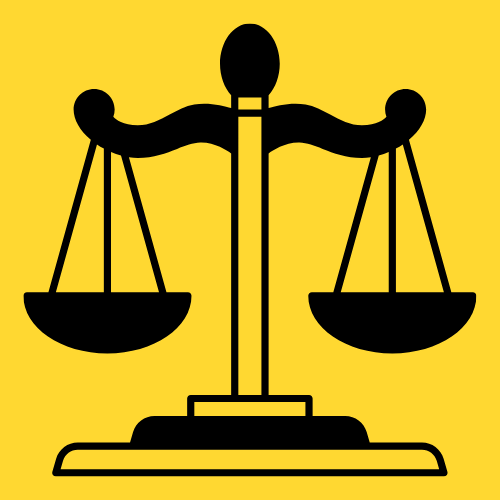REPUBLIC v JOHN s/o GILIED 1984 TLR 273 (HC)
Court High Court of Tanzania - Mwanza
Judge Katiti J
My 4, 1984
CRIMINAL REVISION 68 OF 1983
Flynote
Criminal Practice and Procedure - Sentencing - Guiding principles when sentencing a child or a young person - Children and Young Persons Ordinance, s. 22(2).
-Headnote
The accused aged 15 years, was convicted of causing grievous bodily harm. The District Court sentenced him to nine months' imprisonment plus twelve strokes corporal punishment. The case file was called for revision on the propriety of the imprisonment sentence.
Held: Before a trial magistrate sentences a young person to any term of imprisonment he should, by application of his judicial mind and for sound recorded reasons, have eliminated other methods of legally dealing with such young person as unsuitable. Case Information E Order accordingly. No case referred to. F S. Kidela, for the Republic. [zJDz]Judgment Katiti, J.: The accused/convict John s/o Gilied, having been convicted as charged the trial Magistrate proceeded to sentence him. The trial Magistrate's preamble to sentence speaks loudly G as hereunder: SENTENCE An accused is a young one aged 15 years old as per medical proof the wound he inflicted on the skull of the H complainant showed in fact a maim for life. Accused is to face (nine) months imprisonment, plus 12 strokes corporal punishment so as to shock the mind of the accused not to repeat that kind of offence, and make an example for other many cruel youths, who are in mass prevailing in this District. The right of Appeal explained. 1984 TLR p274 KATITI J SGD: D.M. Mahizi A District Magistrate 18/11/1983 The said John Giled had hardly seen the gates of the prison, when he was sent back by the Prison authorities, reminding the trial court of the provisions of section 22, of the Children and Young Persons Ordinance Cap. 13. It is for the above reason that this case has come to us for revision.
As the learned State Attorney Mr. Kidela submitted, certified as it was that the accused was aged fifteen years of age, then obviously the trial magistrate should have been guided by the provisions C of the Children and Young Persons Ordinance Cap. 13, generally, and the provisions of s.22(2) of the same chapter in particular. This sub-section has the following to say, and I quote: D Section 22 (2). No young person shall be sentenced to imprisonment, unless the court considers that, none of the other methods in which the case may be legally dealt with, by the provisions of this or any other Ordinance, is suitable. It is easy to discern that the provisions of section 22 (2) of the Children and Young Persons E Ordinance Cap. 13 do not favor the imprisonment of young persons, unless imprisonment is in the circumstances of the case, the inevitable last resort. It follows therefore, that before a trial magistrate, sentences a young person to any term of imprisonment, he should by application of his F judicial mind and for sound recorded reasons, have eliminated other methods of legally dealing with such young person, as unsuitable. Apart from sentencing a young person, to a term of imprisonment which should be considered as a last resort, the following methods of dealing with a young person, upon conviction, give a trial magistrate many options, from which by using his judicial approach, he may choose one or more methods to deal with the young person offender. The trial magistrate may: (a) Impose corporal punishment not exceeding twelve strokes - See Section (6) and 8 (2), of the Corporal Punishment Ordinance Cap. 17. (b) Impose fine, and or order payment of compensation or even costs to be paid by the parent, or guardian, provided the said parent, or guardian, has been given opportunity of being heard on the same - see section 21 of Children and Young Persons Ordinance Cap. 13. (c) May place such convicted young person on probation - see section 18 of the Children and Young Persons Ordinance Cap. 13. (d) May commit such convicted young person to an Approved School where the Manager of such Approved School has informed the court that, there is a vacancy - see section 24 of Cap. 13. D (e) The District Court may in addition, or in the alternative.
(i) Discharge the said convicted young person un-conditionally or conditionally.
(ii) Repatriate him/her at the expense of Government to his/her home, or District of origin, where E and when circumstances so warrant.
(iii) Hand such convicted young person to the care of a fit person, or institution named in the order, subject to such person's or institution's willingness and readiness to undertake such care - See section 23 of Cap. 13.
In this case, the trial court's choice of imprisonment was not judicially reached, despite the onesided sentiments that the trial magistrate did demonstrate. Grievous bodily harm may have been suffered, G and indeed, this was the trial magistrate's conclusion. Be it as it may, this did not disqualify the said trial magistrate, from considering what was in the interests of the accused, nor make him succumb to sentiments that dictated disobedience to the law as H above shown. I do agree that the complainant suffered grievous harm, but the trial magistrate should not have been oblivious to the fact that the accused was also a first offender. And the said accused being a young person, the same trial magistrate, in coming to his decision to imprison him, he should have shown, why or how in view of the provisions of section 22 (2) of the Children and I Young Persons Ordinance, Cap. 13, the other methods of dealing with him 1984 TLR p276 were unsuitable. This he did not. Having considered the case generally, I am of the view that A imprisonment was not necessarily an inevitable course of action. I therefore set aside the imprisonment order, but confirm the corporal punishment awarded. The process to be initiated for the execution of such sentence, subject of course to the provisions of Section 15 (1) of Corporal B Punishment Ordinance Cap. 17, i.e., the doctor has to certify the accused's physical fitness to undergo the same.
Order accordingly.
1984 TLR p276
D

%20(27).png)
%20(10).png)





0 Comments
PLACE YOUR COMMENT HERE
WARNING: DO NOT USE ABUSIVE LANGUAGE BECAUSE IT IS AGAINST THE LAW.
THE COMMENTS OF OUR READERS IS NOT OUR RESPONSIBILITY.